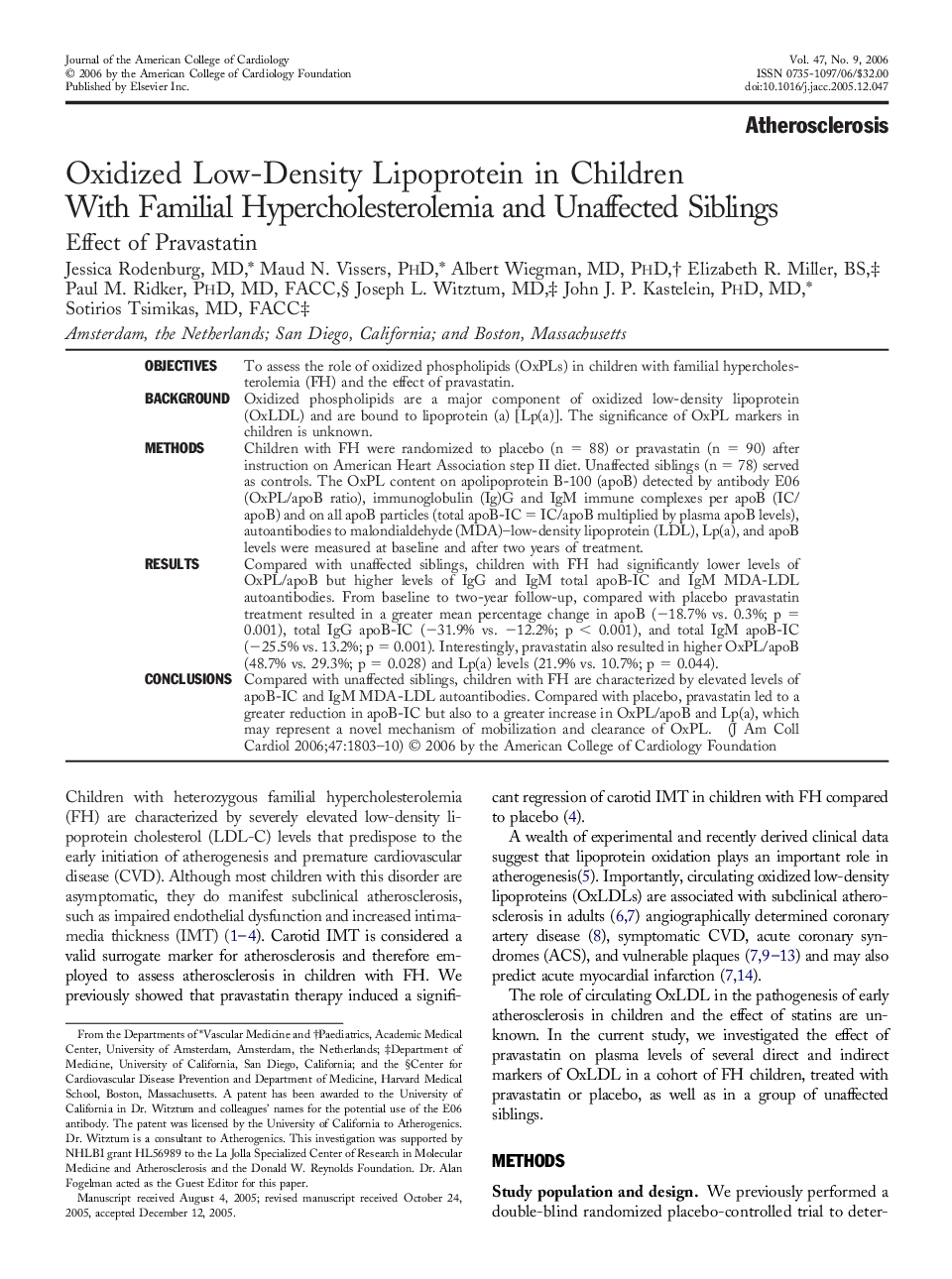| Article ID | Journal | Published Year | Pages | File Type |
|---|---|---|---|---|
| 2955412 | Journal of the American College of Cardiology | 2006 | 8 Pages |
ObjectivesTo assess the role of oxidized phospholipids (OxPLs) in children with familial hypercholesterolemia (FH) and the effect of pravastatin.BackgroundOxidized phospholipids are a major component of oxidized low-density lipoprotein (OxLDL) and are bound to lipoprotein (a) [Lp(a)]. The significance of OxPL markers in children is unknown.MethodsChildren with FH were randomized to placebo (n = 88) or pravastatin (n = 90) after instruction on American Heart Association step II diet. Unaffected siblings (n = 78) served as controls. The OxPL content on apolipoprotein B-100 (apoB) detected by antibody E06 (OxPL/apoB ratio), immunoglobulin (Ig)G and IgM immune complexes per apoB (IC/apoB) and on all apoB particles (total apoB-IC = IC/apoB multiplied by plasma apoB levels), autoantibodies to malondialdehyde (MDA)–low-density lipoprotein (LDL), Lp(a), and apoB levels were measured at baseline and after two years of treatment.ResultsCompared with unaffected siblings, children with FH had significantly lower levels of OxPL/apoB but higher levels of IgG and IgM total apoB-IC and IgM MDA-LDL autoantibodies. From baseline to two-year follow-up, compared with placebo pravastatin treatment resulted in a greater mean percentage change in apoB (−18.7% vs. 0.3%; p = 0.001), total IgG apoB-IC (−31.9% vs. −12.2%; p < 0.001), and total IgM apoB-IC (−25.5% vs. 13.2%; p = 0.001). Interestingly, pravastatin also resulted in higher OxPL/apoB (48.7% vs. 29.3%; p = 0.028) and Lp(a) levels (21.9% vs. 10.7%; p = 0.044).ConclusionsCompared with unaffected siblings, children with FH are characterized by elevated levels of apoB-IC and IgM MDA-LDL autoantibodies. Compared with placebo, pravastatin led to a greater reduction in apoB-IC but also to a greater increase in OxPL/apoB and Lp(a), which may represent a novel mechanism of mobilization and clearance of OxPL.
